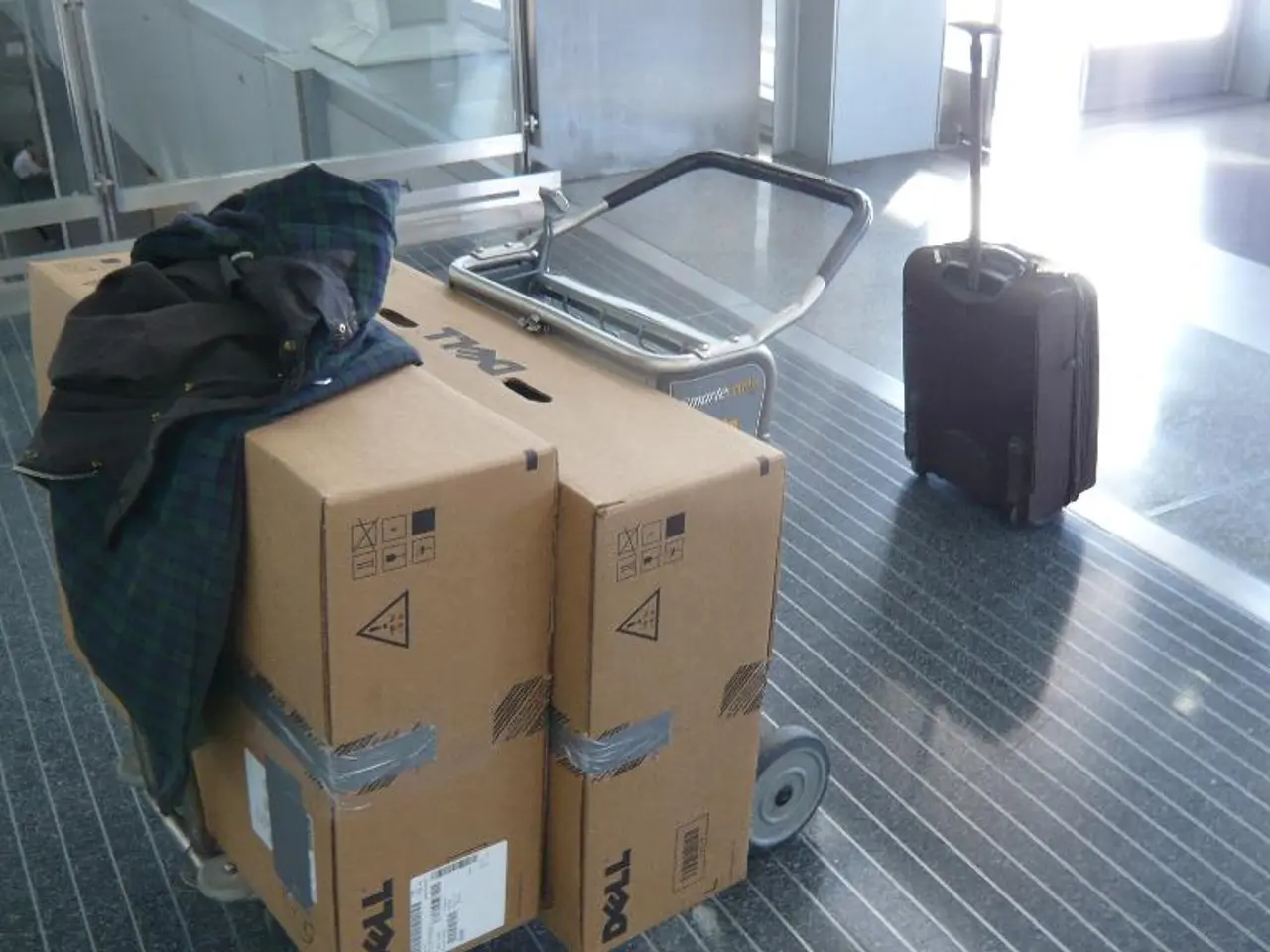Import demands for containers in the United States Nose-dive due to Tariffs and Economic Instability
=====================================================================================================
In a series of unexpected twists, the U.S. container import market has been grappling with significant changes due to recent tariffs and economic uncertainties.
Peak Season Surcharges Announced
Several carriers have announced peak season surcharges for September, reflecting the increased pressure on domestic freight markets.
Sharp Decline Followed by a Rebound
U.S. containerized imports from China experienced a sharp decline in May 2025, falling by about 28.5% year-over-year and 20.8% from April. This drop was attributed to tariff impacts and the removal of the duty-free de minimis exemption for Chinese parcels. However, by July 2025, container imports from China surged by 44.4%, reaching 923,075 TEUs and driving total U.S. container imports to approximately 2.62 million TEUs—the highest since May 2022.
This rebound is believed to be a result of importers frontloading shipments to avoid higher tariff rates and adjustments under temporary tariff truce extensions, rather than a sustained increase in import demand.
Strain on U.S. Port Operations and Freight Markets
The intense volatility in import volumes has caused ripple effects in the domestic freight market, causing peak pressure on port infrastructure, capacity bottlenecks, and unpredictability in freight rates as supply chains diversify or frontload. Major ports such as Los Angeles and Long Beach suffered the biggest import volume declines initially but regained activity partially by July.
Economic Uncertainty and Supply Chain Planning
Economic uncertainty, including trade policy shifts and interest rate fluctuations, continues to cloud supply chain planning for 2025. The disruption in U.S. container imports has rippled across domestic freight markets, accelerating traditional peak season activity by one to two months.
Impact on Commodity Prices and Cost Structures
The tariffs also impact commodity prices, with effects cascading through the supply chain, influencing costs for textiles, leather goods, food, and vehicles.
Declines in Inbound Ocean Freight and Truckload Markets
Both inbound ocean freight and truckload markets have shown year-over-year declines, with the Inbound Ocean TEUs Volume Index (IOTI.USA) and Outbound Tender Volume Index (OTVI.USA) posting double-digit drops. Intermodal rail volumes (ORAILL.USA), however, have shown modest resilience, down just 5%.
Looking Ahead
While tariffs have reduced Chinese imports in mid-2025, subsequent rebounds and tariff extensions have intensified infrastructure demand and freight market disruption. Future volumes are likely to decline once tariffs fully take effect or trade tensions ease.
This article was published in "Global Logistics" and "our publication Daily" and can be shared on various platforms such as X, Facebook, printed, or shared on LinkedIn.
[1] IndexBox Platform Data [2] Container Trade Statistics [3] Supply Chain Dive [4] Bloomberg [5] Journal of Commerce
- The intense volatility in container imports, due to tariffs and trade uncertainties, has led to a significant strain on the global container shipping industry, causing pressure on domestic freight markets, supply chain disruptions, and unpredictability in freight rates.
- Economic uncertainties, including finance-related issues such as tariffs and trade policy shifts, continue to influence global trade, specifically impacting the supply chain planning for 2025, and affecting commodity prices, textiles, leather goods, food, and vehicles in the United States.




